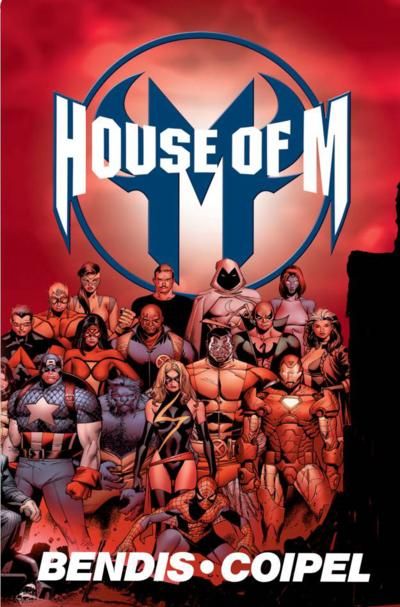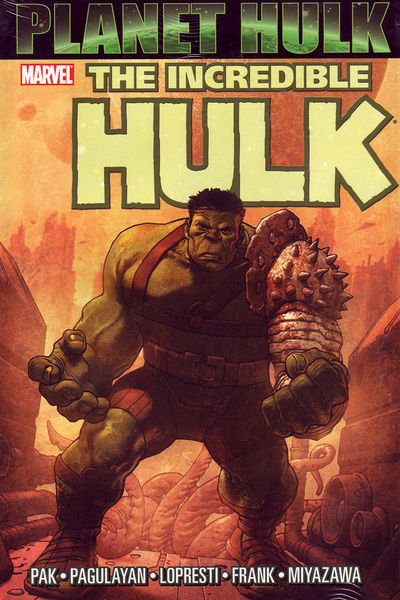Here are the next five storylines on the countdown, as voted on by you, the readers!! Here is the master list of all storylines featured so far.
(As usual, I'll give you the results now and I'll fill in the details later on!)
65. "No Man's Land" by Various Writers (notably Greg Rucka and Devin Grayson) and Various Artists (Notably Alex Maleev and Dale Eaglesham) (Basically every Batman title that came out in 1999) - 160 points (1 first place vote)
The basic gist of No Man's Land is that, following a devastating earthquake, the federal government determined that Gotham City's infrastructure was so badly damanged that there was no way that the city could ever recover from the disaster, so rather than rebuild, they decided to give the citizens X amount of days to evacuate the city at which point the government had all the bridges to Gotham destroyed, leaving it completely cut off from the rest of the country.
Naturally, a large chunk of citizens did not get out in time (or could not afford to get out). Also, the various villains of Gotham felt that this was a perfect place for them to be, seeing as how there was no more official law in the city.
No OFFICIAL law, but a rag tag group of Gotham City cops stayed behind to help guard the city. Oh, and so did the Batman!
So followed a year's worth of stories set in a Gotham where cops use bows and arrows because arrows can be replaced - where supervillains basically had fiefdoms - and where every citizen might have to fear for their life every other moment.
Oh, and this was also the storyline that gave the Bat-books the brand new Batgirl, Cassandra Cain! And also took away Sarah Essen, Commissioner Gordon's wife. It also introduced Greg Rucka to the Bat-books, a role he would remain in for quite a few memorable years!
64. "The Elektra Saga" by Frank Miller and Klaus Janson (Daredevil #168, 174-182, 187-190) - 162 points (2 first place votes)
Elektra was introduced in the first issue of Daredevil fully written by Frank Miller, as a former "love of Matt Murdock's life" in college who, after her father (a Greek ambassador)'s assassination, moved away from New York only to return years later as an assassin herself.
Throughout much of the next 14 issues Matt Murdock has to deal with Elektra's return, both in his personal life as Matt Murdock (seeing his first real love again after years apart) and in his superhero life as Daredevil as Elektra was, you know, an assassin, and Daredevil doesn't take kindly to assassins.
This duality came into play pretty early on, as the pair alternated between teaming up and fighting each other.
Things changed, however, when Elektra was chosen personally by Wilson Fisk, the Kingpin of Crime, to become his chief assassin.
Now she and Matt were definitively at odds - although when she was assigned to murder Foggy Nelson's, Matt's law partner (and former college roommate), she could not go through with it when Foggy recognized her, showing that there was still some good in her.
However, this epiphany did not last long, as her rival assassin, Bullseye, chose to prove himself to Kingpin by taking Elektra out, which he did, slicing her throat with a playing card and then stabbing her to death with her own sai (which were her weapons of choice).
Her death had a profound impact upon Matt, as did her later attempted resurrection by the ninja group, the Hand.
This was Miller's first ongoing series as writer and artist, and it was quite impressive to see how adept he was at creating engaging, memorable characters with strong interpersonal relationships.
The great Klaus Janson began to share the art duties with Miller as the series went along (first just as inker, but as time went by, Janson would take over more and more of the art on the title).
63. "Year of the Bastard"/"The New Scum" by Warren Ellis, Darick Robertson and Rodney Ramos (Transmetropolitan #13-24) - 164 points (5 first place votes)
Transmetropolitan is the story of Spider Jerusalem, a noted "gonzo" journalist (a la Hunter S. Thompson) some time in the future who has effectively dropped out of society after signing a lucrative book deal. The only problem is that he never delivered on all the books in his contract, so now he has to come back to "The City" (the largest city on Earth) to become a journalist again to both support himself and collect material for the books.
He goes to work for his friend Mitchell Royce at The World, the largest newspaper in The City.
Along with his trusted aides Yelena Rossini and Channon Yarrow (who he affectionately refers to as his "filthy assistants"), Spider begins to plug in to the beat of The City once again after years away, and he starts doing what he does best - causing a ruckus!
The stories at issue here take place during the second year of the title (the book ran five years worth of stories), as Spider turns his eye to the Presidential Election, where he initially is wary of one candidate (known as "The Beast") before he realizes that the OTHER candidate (known as "The Smiler") is far more sinister of a foe.
The rest of the series is mostly devoted to Spider's battle with The Smiler through their respective mode of weapon (the press in Spider's case - the government in the Smiler's case), but it is these two stories that form the basis of that battle, as "The Year of the Bastard" tells the tale of the campaign (as Spider comes to truly realize how evil the Smiler is, mostly through Spider's ill-fated relationship with Smiler's naive campaign manager) while "The New Scum" shows what happens when Spider's efforts to keep The Smiler from winning fail.
Warren Ellis weaved a tight and complex narrative with Transmetropolitan, but the first year was mostly one-off stuff showing the character of The City and its people - it was with these stories that Ellis latched on to a central narrative, and a brilliant one that would drive the series for the rest of its run.
And I don't need to tell you that Darick Robertson's artwork was great, do I?
61 (tie). "House of M" by Brian Michael Bendis, Olivier Coipel and Tim Townsend (House of M #1-8) - 165 points (2 first place votes)
After the effects of Avengers: Disassembled, Wanda Maximoff, the Scarlet Witch, is being held by her father, Magneto, in the ruins of Genosha. Naturally, someone who just, well, you know, disassembled the Avengers (by way of killing off a few of them and destroying their home) was considered way too dangerous to just let the former leader of the Brotherhood of Evil Mutants decide what to do with her, so the newly re-formed Avengers and the X-Men got together and decided to hash out a plan to deal with Wanda.
Some of the group felt that with someone this powerful and this unhinged, perhaps death was the only option. Most of the others disagreed vehemently. However, when news of their arrival in Genosha spread to Wanda's family, she was pushed to warp reality once again.
This time, she changed the world so that rather than being persecuted, mutants were the ruling class of Earth, and Magneto was effectively the King of the United States. "The House of M" was literally The House of Magnus - the Royal Family, if you would.
What was particularly shocking was that, for a lot of people, this reality was a lot better than their old reality. Ms. Marvel was known as Captain Marvel, and she was really well-respected. Wolverine was the Head of SHIELD. Spider-Man was a famous celebrity with a beautiful wife named Gwen.
However, due to his memory issues, Wolverine remembers everything. So he slowly gets the gang back together again (and he learns that there is a Homo Sapien Resistance Movement, so it's not like EVERYone is happier in this reality) and they take the fight to Magneto.
It is during this battle that Wanda freaks out once again and decides to "solve" the problem by eliminating ALL mutants in the world - only Doctor Strange's magical powers kept a certain amount of mutants still mutants.
Olivier Coipel's artwork in this series is amazing.
This was Brian Michael Bendis' first major company-wide crossover, and it set the tone and style of the crossovers that followed (including the whole "mini-series to tie in rather than tying in the ongoing titles - I believe this was the first time this particular approach was taken with a company-wide crossover).
61 (tie). "Planet Hulk" by Greg Pak, Gary Frank, Aaron Lopresti and Carlo Pagulayan (Incredible Hulk Vol. 2 #92-105) - 165 points (2 first place votes)
Planet Hulk was an interesting idea for a storyline in that it tried to finally address the whole "Hulk just want to be left alone" idea. In Planet Hulk, the Illuminati (led by Reed Richards, Tony Stark and Doctor Strange) decided that it would be best if they finally DID put Hulk somewhere where he could be left alone. So they tricked him on to a spacecraft headed for a peaceful uninhabited planet.
Of course, this being a comic in need of a conflict, the spacecraft is damaged and Hulk instead lands on a planet practically ruled by gladiator conflict. Since the heroes were in the midst of the Civil War at this time, no one noticed what had happened to the Hulk's ship, so he was basically left alone to fend for himself on a planet where he was not necessarily the strongest one there was.
Naturally, Hulk DID eventually prove himself to be the strongest one there was, working alongside a group of gladiators who became his friends and blood brothers.
Greg Pak did a very impressive job setting up this epic storyline slowly, and he did an especially cool piece of work developing Hulk's "Warbound" compatriots.
The art was strong, from a number of different artists.
The story ends with a cliffhanger leading into the follow-up crossover, World War Hulk (as Hulk gets his revenge).











